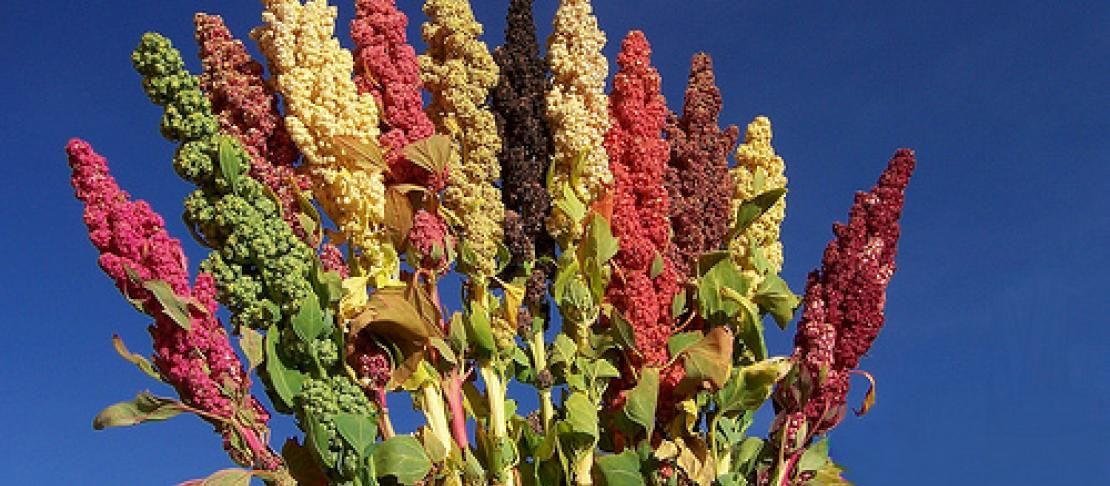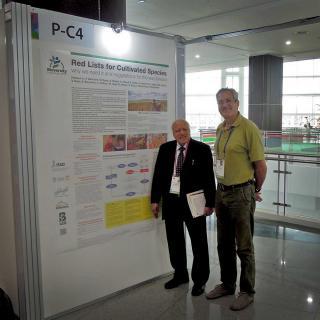Can cultivated species get their own Red List?

by Stefano Padulosi
The world´s food basket is shrinking and most concerning is the reduction of species and varieties used by humankind in food and nutrition security which raises serious concerns about the sustainability of feeding the world today and in the future. Yet, whereas we deploy consistent efforts in monitoring the status of wild biodiversity, very limited is the research in monitoring diversity of plants used by farmers, assess threats of genetic erosion, understand how diversity is helping farmers in coping with climate change. In the light of this, Stefano Padulosi, Senior Scientist at Bioversity International, set out to present his poster-project, prepared for the World Conservation Congress, held by the International Union for Conservation of Nature (IUCN), on farm conservation, traditional crops and climate change. Here he summarizes his experiences during the conference:
Today was a critical day for exploring the International Union for Conservation of Nature (IUCN) interest in Red Lists for cultivated species, my main reason for coming all the way from Rome to the IUCN’s World Conservation Congress in Jeju, South Korea. Norman Warthmann, a German colleague, and I had developed a poster on red lists for cultivated species in the framework of the International Fund for Agricultural Development (IFAD)-CGIAR Research Program on Climate Change, Agriculture and Climate Change (CCAFS) supported project I am currently coordinating, implemented in partnership with Local Initiatives for Biodiversity, Research and Development (LI-BIRD)in Nepal, M S Swaminathan Research Foundation (MSSRF) in India and La Fundación PROINPA in Bolivia.
This was the largest poster I have ever made (130 x 170 cm) and while carrying it on the plane I felt all the travelers’ eyes pinned on my long tube. Norman insisted on making it big, and he was right. Once at the poster room on the first floor of the Convention Centre I realized that most of the posters were as large as mine! The poster looked really great, and to my surprise I had even the chance to share it with my hero and well-known champion of agrobiodiversity, Prof. M.S. Swaminathan. He congratulated me for the fine poster and offered nice encouraging words for my mission (impossible).

After putting up the poster I searched for the IUCN staff of the Species Survival Commission (SCC), who takes care of the Red Lists. Not very encouraging, I must say, as they seem interested in Red Lists only for crop wild relatives. Good, but not exactly the same thing! Thousands of traditional varieties are disappearing today, and while they may not command the respect of senior decision makers, they do represent a formidable ally for food and nutrition security, food systems resilient to climate change, women’s empowerment, diverse food cultures, self esteem and so on. Why can’t IUCN leverage its expertise and international recognition on Red Lists for wild species to help monitor crops (and domesticated animals too)?
I persevered and raised this question at the evening workshop on Red Lists organized by the SSC. The moment of truth came as the floor was opened for comments, and I was given the chance to finally explore publicly IUCN’s interest in Red Lists for cultivated species. The answer was quite straightforward. Yes, monitoring cultivated crops is important but this is not the job of IUCN; other organizations like the Food and Agriculture Organisation (FAO) and Bioversity International are in fact better placed to do this work.
How to assess this response? The Congress is still at the beginning but it is clear that it is unlikely to include a motion to recommend inclusion of Red Lists for cultivated species in IUCN’s work. The recognition of the importance of this work does however seem to be however there, and I am looking forward to assess that further when I present my poster.
This blog post was written by Stefano Padulosi, Senior Scientist at Bioversity International, who is reporting from the IUCN’s World Conservation Congress in Jeju, South Korea. Follow @stefanopadulosi as he tweets about #IUCN2012. You can also follow CCAFS on Facebook, and on Twitter @Cgiarclimate.